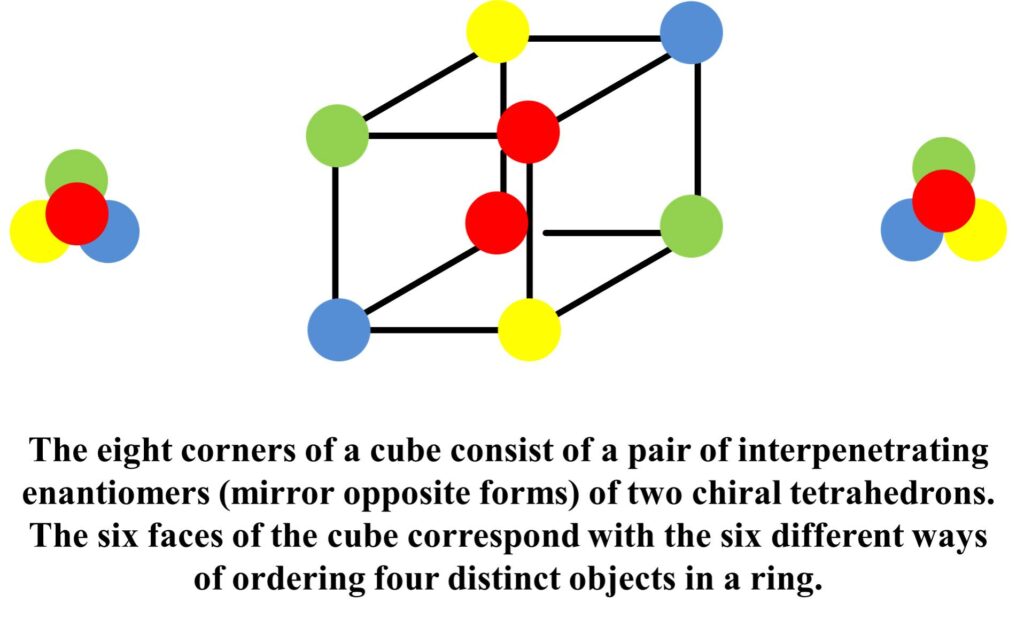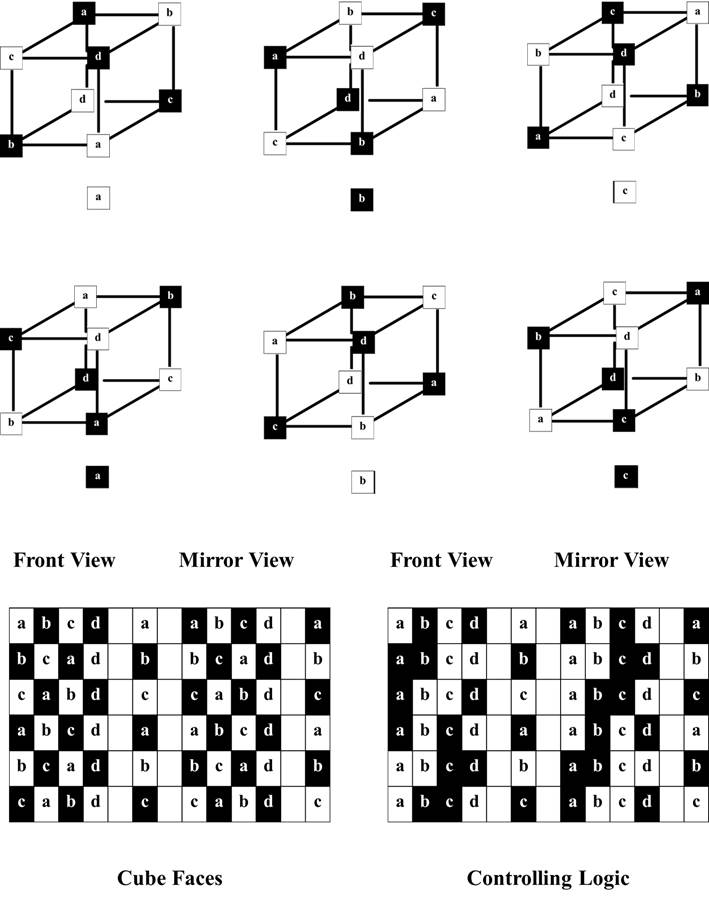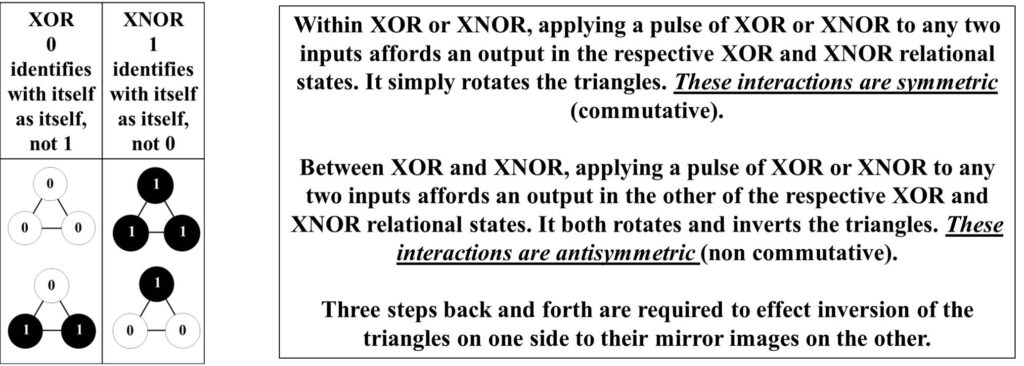A recent paper published in Science (Zeng et al., Photo-induced chirality in a nonchiral crystal, Science, Vol. 387, Issue 6732, p. 431) describes an antiferro-chiral crystal of BPO4. This crystal comprises interpenetrating enantiomers that can exist in racemic form or switch to net left- or right-handed forms via a light pulse. This mirrors chiralkine counting, which identifies six relational states instead of three, as each object is defined by a relationship between what it is and what it is not.
When used in computation, the crystal could potentially function as an ultrafast, non-commutative XOR/XNOR gate that retains a memory of past, present, and future states. Unlike traditional logic gates, which rely on commutative operations, chiralkine-based computation embraces symmetry and relational logic, offering new possibilities in advanced computing.
This system embodies the concept I first explored in my fictional novel Resolution of Zero: racemic states correspond to 0, while left- and right-handed states map to +1 and -1. Viewed relationally, these become two opposite zero states, two +1 states, and two -1 states, highlighting the depth of symmetry and relational dynamics in both physical and mathematical structures.
The relational positions of the corners are controlled logically through rotations by oscillation between XOR and XNOR.
The system is inherently noncommutative, and so can track past, present and future.
Original text revised for clarity with the assistance of Chat GPT.




